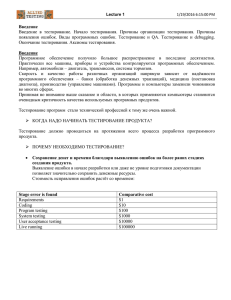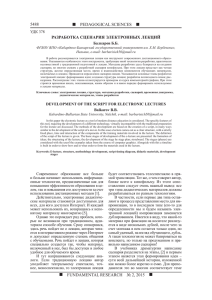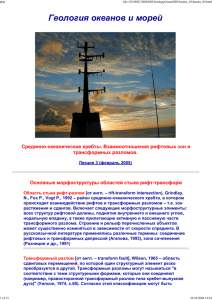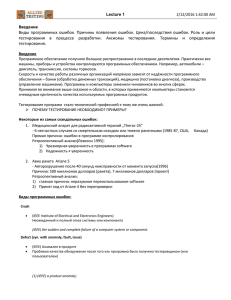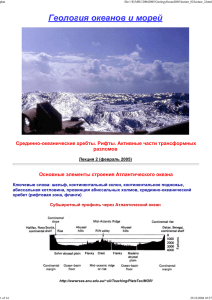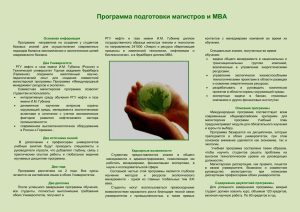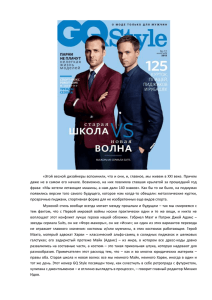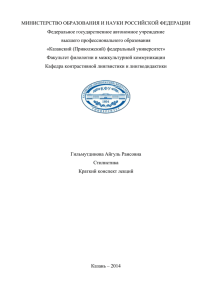требования и вопросы к экзамену
advertisement
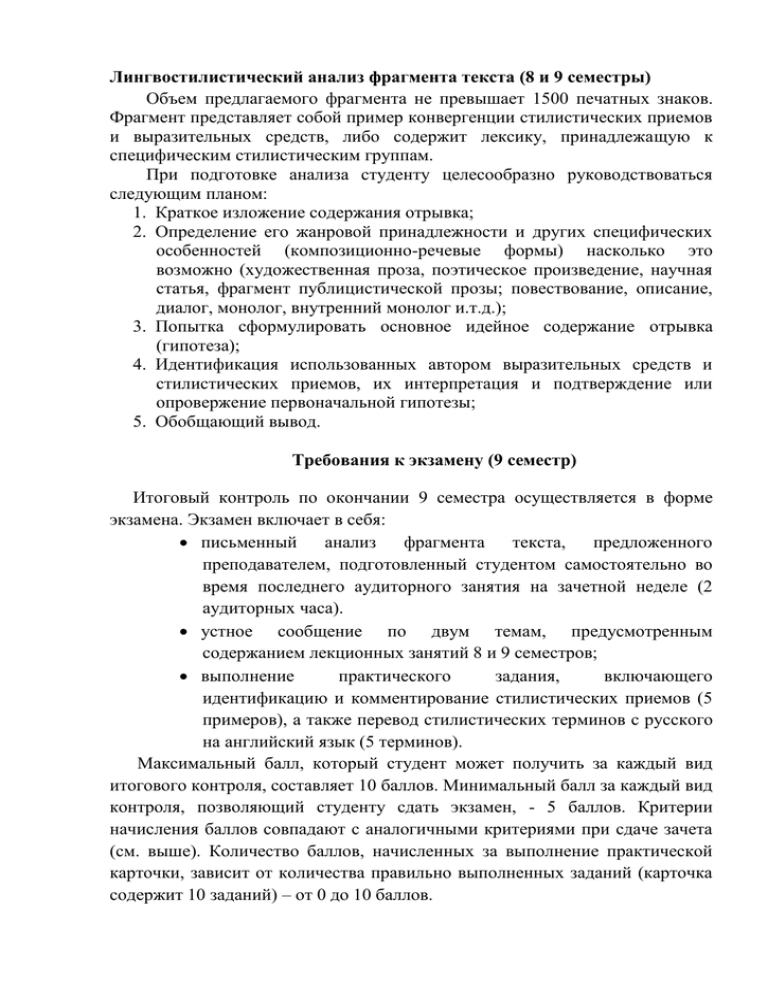
Лингвостилистический анализ фрагмента текста (8 и 9 семестры) Объем предлагаемого фрагмента не превышает 1500 печатных знаков. Фрагмент представляет собой пример конвергенции стилистических приемов и выразительных средств, либо содержит лексику, принадлежащую к специфическим стилистическим группам. При подготовке анализа студенту целесообразно руководствоваться следующим планом: 1. Краткое изложение содержания отрывка; 2. Определение его жанровой принадлежности и других специфических особенностей (композиционно-речевые формы) насколько это возможно (художественная проза, поэтическое произведение, научная статья, фрагмент публицистической прозы; повествование, описание, диалог, монолог, внутренний монолог и.т.д.); 3. Попытка сформулировать основное идейное содержание отрывка (гипотеза); 4. Идентификация использованных автором выразительных средств и стилистических приемов, их интерпретация и подтверждение или опровержение первоначальной гипотезы; 5. Обобщающий вывод. Требования к экзамену (9 семестр) Итоговый контроль по окончании 9 семестра осуществляется в форме экзамена. Экзамен включает в себя: письменный анализ фрагмента текста, предложенного преподавателем, подготовленный студентом самостоятельно во время последнего аудиторного занятия на зачетной неделе (2 аудиторных часа). устное сообщение по двум темам, предусмотренным содержанием лекционных занятий 8 и 9 семестров; выполнение практического задания, включающего идентификацию и комментирование стилистических приемов (5 примеров), а также перевод стилистических терминов с русского на английский язык (5 терминов). Максимальный балл, который студент может получить за каждый вид итогового контроля, составляет 10 баллов. Минимальный балл за каждый вид контроля, позволяющий студенту сдать экзамен, - 5 баллов. Критерии начисления баллов совпадают с аналогичными критериями при сдаче зачета (см. выше). Количество баллов, начисленных за выполнение практической карточки, зависит от количества правильно выполненных заданий (карточка содержит 10 заданий) – от 0 до 10 баллов. Примерный перечень вопросов к экзамену по дисциплине «Стилистика» (9 семестр) 1. The object and aims of stylistic studies. The relationship between stylistics and other branches of linguistics. 2. Basic terms of stylistics: style, stylistic function. 3. Basic terms of stylistics: expressive means and stylistic devices (Galperin), convergence of stylistic devices (Riffaterre). 4. Decoding stylistics. Stylistics and the theory of information (Arnold). 5. Text levels. Literary stylistics and linguo-stylistics in text interpretation. 6. The problem of English vocabulary classification. Stylistic layers and groups of the English vocabulary (Galperin). 7. Lexical meaning of a word, its structure. Denotative and connotative meanings. Components of connotative meaning (Arnold). 8. Tropes. Interaction of direct and transferred/ figurative meanings of a word. 9. Simile: definition, structural peculiarities. Simile and comparison. 10.Metaphor: definitions and semantic peculiarities. Metaphor and simile. Types of metaphor. 11.Metonymy: definition and semantic peculiarities. Metonymy and metaphor. 12.Epithet. Classifications of epithets and ways of expressing them. 13.Hyperbole, litotes and irony: comparative overview. 14.Pun and its types. Sources of puns. 15.Oxymoron and zeugma: lexico-syntactical peculiarities. 16.Stylistic syntax: inversion, detachment and their function. 17.Stylistic syntax: syntactical parallelism, chiasmus. 18.Types of lexico-syntactical repetitions. Polysyndeton and asyndeton. 19.Gradation. Climax and anticlimax. Antithesis. 20.Ways of syntactical compression: ellipsis, one-member sentences, aposiopesis. 21.Phonetic expressive means and stylistic devices. 22.The problem of functional styles. Classifications of Galperin, Arnold and Skrebnev. Образец экзаменационной карточки с практическим заданием Identify and comment on the stylistic devices in the following fragments: 1. Down came the storm, and smote again The vessel in its strength (Longfellow) 2. Blue suit grinned, might even have winked…(Priestley) 3. A handsome man kisses misses, an ugly man misses kisses. 4. O heavy lightness! serious vanity! Mis-shapen chaos of well-seeming forms! (Shakespeare) 5. Gold! Gold! Gold! Gold! Bright and yellow, hard and cold… (Hood) Translate into English: 1. синекдоха; 2. рифма; 3. метонимия; 4. архаизм; 5. гипербола. Глоссарий стилистических терминов, включенных в экзаменационные карточки Lecture 1 Stylistics, branches of linguistics, language means Lecture 2 Linguo-stylistics, literary stylistics; to encode/ decode information; aesthetic impression/ information, emotive/ expressive/ evaluative information; stylistic function; convergence; expressive means, stylistic device. Lecture 3 Binary opposition; stylistically marked/ unmarked words; stylistic layer; literary vocabulary (special and common), colloquial vocabulary (special and common); archaic words, poetic(al) words, terms, foreign words, barbarisms; professional/ jargon/ slang/ dialectal/ vulgar words, nonce-words. Stylistic synonyms; stylistic reference, emotional colouring. Lecture 4 Denotative/ connotative meaning; emotive/ evaluative/ expressive/ stylistic connotation; direct meaning, figurative/ transferred meaning; trope; simile; metaphor, ‘tenor’, ‘vehicle’, ‘ground’, simple metaphor, sustained/ prolonged metaphor, trite or genuine metaphor. Personification; allegory; metonymy; synecdoche; antonomasia. Lecture 5 Lecture 6 Epithet; conventional/ fixed epithet, metaphorical epithet; phrase epithet, reversed epithet. Hyperbole; litotes; irony. Lecture 7 Oxymoron; zeugma; pun; paradox. Lecture 8 Polysemy; homonym; homophone; contextual synonyms; allusion. Inversion; detachment; syntactical parallelism; chiasmus; anaphora, epiphora, anadiplosis, framing. Polysyndeton, asyndeton; gradation; enumeration; antithesis. Lecture 9 Lecture 10 Lecture 11 Lecture 12 Lecture 13 Represented speech; rhetorical question; ellipsis, one-member sentence; break-in-the-narrative (aposiopesis). Alliteration, assonance; onomatopoeia; euphony; graphon; rhythm; rhyme; stanza. Functional style; sublanguage; belles-lettres style, scientific prose style, publicistic style, newspaper style, style of official documents.
